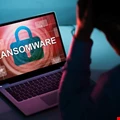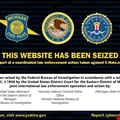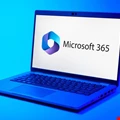Infosecurity News

Reworked MacSync Stealer Adopts Quieter Installation Process
A newly discovered macOS malware mimics legitimate apps code-signed and notarized by Apple

Clop Ransomware Group Linked to 3.5m University of Phoenix Breach
A University of Phoenix data breach affecting nearly 3.5 million individuals has been claimed by the Clop ransomware collective

Top Ransomware Trends of 2025
Infosecurity has selected some of the key ransomware statistics for 2025

Nissan: Thousands Impacted By Red Hat Breach
Nissan has revealed that over 20,000 customers have had personal information compromised in a third-party data breach

Hundreds of Arrests as Operation Sentinel Recovers $3m
Operational Sentinel helps to crack down on cybercrime across 19 African countries in a month-long campaign

86% Surge in Fake Delivery Websites Hits Shoppers During Holiday Rush
NordVPN has warned that malicious postal service websites have surged by 86% over the past month, targeting holiday delivery tracking

Monitoring Tool Nezha Abused For Stealthy Post-Exploitation Access
Open-source server monitoring tool, Nezha, is being exploited by attackers for remote system control

UK: NHS Supplier Confirms Cyber-Attack, Operations Unaffected
DXS International, an official partner of NHS England, said the breach has not affected its operations

Nefilim Ransomware Affiliate Pleads Guilty
A Ukrainian man has pleaded guilty to charges connecting him to Nefilim ransomware attacks

Scripted Sparrow Sends Millions of BEC Emails Each Month
Fortra has uncovered a prolific BEC group dubbed “Scripted Sparrow” spanning three continents and at least five countries

Denmark Blames Russia for "Destructive" Cyber-Attacks
The Danish intelligence service believes some pro-Russian hacktivist groups have links with the Kremlin

US Charges 54 in Massive ATM Jackpotting Conspiracy
The US has charged 54 individuals in a massive ATM jackpotting conspiracy linked to Venezuelan crime syndicate Tren de Aragua, accused of stealing millions

FBI Disrupts Russian Crypto Laundering Hub Enabling Cybercrime
A 39-year-old Russian national is accused of working with cybercriminals to convert criminal proceeds from cryptocurrency into various cash currencies

OAuth Device Code Phishing Campaigns Surge Targets Microsoft 365
A surge in phishing attacks exploiting Microsoft’s OAuth device code flow has been identified by Proofpoint

North Korea Steals Over $2bn in Crypto in 2025
Chainalysis warns North Korea continues to steal billions in crypto for its weapons program

New BeaverTail Malware Variant Linked to Lazarus Group
A new variant of the BeaverTail malware linked to North Korean hackers has been identified targeting cryptocurrency traders and developers

HMRC Warns of Over 135,000 Scam Reports
The UK’s tax office has received 135,500 reports of suspected scams in the past 10 months including 4800 related to self assessment filings

Motors WordPress Vulnerability Exposes Sites to Takeover
A critical flaw in the Motors WordPress theme affecting more than 20,000 installations allows low-privileged users to gain full control of websites

New “Lies-in-the-Loop” Attack Undermines AI Safety Dialogs
A novel attack technique dubbed ”Lies-in-the-Loop” (LITL) has been observed manipulating human approval prompts in agentic AI systems

ISACA Named Global Credentialing Authority for DoD’s CMMC Program
ISACA has been appointed by the US DoD as the global credentialing authority for its CMMC program



